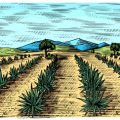Introduction to Vermicomposting in India
Vermicomposting has emerged as a sustainable and eco-friendly solution for waste management and soil fertility enhancement across India. This natural process involves the use of earthworms—locally known as kechua—to convert organic waste into nutrient-rich compost, which is highly beneficial for Indian farmlands. The relevance of vermicomposting in Indian agriculture cannot be overstated, as it not only addresses the challenge of managing agricultural and household waste but also provides an affordable alternative to chemical fertilizers. Over the past decade, there has been a noticeable rise in interest among Indian farmers, especially in rural areas and states like Maharashtra, Tamil Nadu, Punjab, and West Bengal. Farmers are increasingly adopting vermicomposting due to its ability to improve soil health, increase crop yield, and reduce input costs. Additionally, government initiatives and agricultural extension programs have played a crucial role in spreading awareness about this practice. As more communities witness the positive impact of vermicompost on their fields and livelihoods, vermicomposting continues to gain momentum, reflecting a shift towards sustainable farming practices that respect both traditional wisdom and modern ecological needs.
Traditional and Modern Composting Practices
India has a rich heritage of organic farming, where traditional composting practices have been the backbone of sustainable agriculture for centuries. Farmers across rural India have long relied on age-old methods like pit composting, heap composting, and farmyard manure (FYM) to enrich their soils. These techniques use easily available materials such as cow dung, crop residues, leaves, and household waste. While these methods are cost-effective and environmentally friendly, they often require longer decomposition periods and may not always deliver consistent nutrient content.
Comparison: Traditional Composting vs Vermicomposting
| Aspect | Traditional Composting | Vermicomposting |
|---|---|---|
| Raw Materials | Cow dung, crop residue, dry leaves | Cow dung, kitchen waste, farm waste, earthworms |
| Decomposition Time | 4-6 months | 1-2 months |
| Nutrient Content | Variable; depends on inputs and process | Higher & more balanced; rich in micronutrients |
| Labour Requirement | Low to medium | Medium; requires regular monitoring of worms and moisture |
| Cultural Relevance | Deeply rooted in Indian rural traditions (e.g., gaushalas) | Emerging practice; gaining popularity among progressive farmers and agri-entrepreneurs |
| Environmental Impact | Low carbon footprint; prevents burning of residues | Improves soil biodiversity; reduces organic waste load |
| Ease of Adoption | Simple technology; widely understood in villages | Slightly technical; requires training but rapidly spreading with government support schemes like PKVY and ATMA |
The Shift towards Vermicomposting in Indian Agriculture
With the rising awareness about soil health and sustainable farming, many Indian farmers—especially in states like Maharashtra, Tamil Nadu, Punjab, and West Bengal—are gradually shifting from purely traditional composting to modern vermicomposting systems. This transition is driven by the need for faster compost production and higher quality organic fertilizers that can meet the nutrient demands of modern cash crops. The involvement of earthworms, especially native species like Eisenia fetida (red wigglers), is central to this change. Today, farmer producer organizations (FPOs) and Krishi Vigyan Kendras (KVKs) actively promote vermicomposting as an eco-friendly method that aligns with both ancient wisdom and contemporary agricultural needs.

3. Earthworms: Nature’s Farm Workers
Across India, earthworms are affectionately known by local names such as ‘Keet’ or ‘Keeda’, and their presence is celebrated in rural communities. These humble creatures are much more than simple soil dwellers; they are the backbone of traditional Indian farming practices, working tirelessly beneath the surface to improve soil health and crop productivity.
Indigenous Earthworm Species in India
India is home to a diverse range of indigenous earthworm species, including Eudrilus eugeniae (commonly called African Nightcrawler but widely adapted), Perionyx excavatus (known locally as “Indian Blue”), and Lampito mauritii. Each species plays a unique role in the vermicomposting process. Local farmers often prefer native species because they are well-adapted to Indian climatic conditions and agricultural soils.
The Local Wisdom: Why ‘Keet’ Matters
In many states like Maharashtra, Tamil Nadu, and West Bengal, earthworms have been used for generations to rejuvenate fields. Farmers pass down knowledge about identifying healthy earthworm populations and using their castings (‘vermi-compost’) to nourish crops like rice, wheat, and vegetables. The presence of earthworms is seen as a sign of fertile land and balanced ecology.
Boosting Soil Health and Crop Yields
Earthworms improve soil structure by creating channels that allow air and water to penetrate deep into the ground. Their digestion process breaks down organic matter, releasing essential nutrients such as nitrogen, phosphorus, and potassium—nutrients critical for plant growth. This natural fertilisation reduces dependency on chemical inputs, making Indian agriculture more sustainable and cost-effective.
By recognising the importance of indigenous earthworms—‘Keet’—and protecting their habitats, Indian farmers can ensure healthier soils, richer harvests, and a brighter future for sustainable agriculture across the country.
4. Benefits of Vermicomposting for Indian Farmers
Vermicomposting is rapidly gaining traction across India, especially among small and marginal farmers who are searching for eco-friendly, cost-effective solutions to improve their land and livelihood. Let’s discuss the key benefits of vermicomposting in the Indian context, focusing on soil fertility, crop yield, sustainability, economic feasibility, and highlight some local success stories.
Improved Soil Fertility
Indian soils are often depleted due to continuous farming and excessive use of chemical fertilizers. Vermicompost enriches the soil with essential nutrients like nitrogen (N), phosphorus (P), and potassium (K), along with beneficial microorganisms that help break down organic matter naturally. This results in a more porous, aerated soil structure that retains moisture better—crucial for regions facing erratic rainfall.
Comparison of Soil Properties: Chemical Fertilizer vs Vermicompost
| Soil Property | Chemical Fertilizer | Vermicompost |
|---|---|---|
| Nutrient Content | High, but synthetic | Balanced & natural |
| Organic Matter | Low/None | High |
| Microbial Activity | Poor/Reduced | Rich/Increased |
| Soil Structure | Deteriorates over time | Improves continuously |
| Water Retention | Poor in the long run | Excellent retention |
Higher Crop Yield and Quality
Farmers across states like Maharashtra, Tamil Nadu, and Punjab report visibly healthier crops after switching to vermicompost. The nutrients released by earthworms are slowly absorbed by plants, leading to better root development and increased resistance to pests and diseases. Many Indian farmers notice not just higher yields but also improved taste, colour, and shelf life of produce—especially important for fruits and vegetables sold in local mandis (markets).
Sustainability and Environmental Impact
Vermicomposting uses agricultural waste such as cow dung, crop residues, and kitchen scraps—materials readily available in every Indian village. By recycling these wastes into valuable compost, farmers reduce landfill burden and pollution caused by burning stubble or dumping refuse. Earthworm-based composting supports circular agriculture—an ancient practice now being revived under modern organic farming movements in India.
Cost-Effectiveness for Indian Conditions
The initial investment in setting up a vermicomposting pit is low. Ongoing costs are minimal since the process relies on locally available resources and does not require expensive chemical inputs. Farmers can often sell excess vermicompost to neighbours or local cooperative societies for additional income. The table below illustrates this advantage:
Cost Comparison: Chemical Fertilizer vs Vermicompost (Per Acre Per Season)
| Input Type | Average Cost (INR) | Additional Benefits/Income? |
|---|---|---|
| Chemical Fertilizer | ₹5,000 – ₹8,000 | No (only expense) |
| Vermicompost (self-made) | ₹1,500 – ₹2,500 | Yes (can sell surplus compost) |
| Vermicompost (market-bought) | ₹3,000 – ₹4,000 | No direct income but better ROI via yields |
Local Success Stories: Inspiration from Indian Fields
In Andhra Pradesh’s Anantapur district, smallholder farmer Smt. Lakshmi Devi converted her farm waste into vermicompost using native earthworms (“Nattu Yerra Puzhu”) and reported a 30% increase in groundnut yield within two years. In Punjab’s Ludhiana region, a group of young farmers formed a cooperative to produce vermicompost at scale—reducing input costs by half while supplying organic produce to urban markets. These stories demonstrate that vermicomposting is not just a theoretical concept but a practical solution reshaping rural India’s future.
Together, these benefits make vermicomposting an ideal fit for Indian agriculture—nurturing the land while securing the livelihoods of those who depend on it.
5. How to Start Vermicomposting at Home or on the Farm
Getting Ready: Choose Your Location and Container
For Indian homes and farms, select a shaded spot protected from heavy rain and direct sunlight. In rural areas, a corner of your backyard or under a tree works well; urban residents can use balconies, terraces, or any cool corner. Use locally available containers such as old cement rings, brick tanks, plastic drums, or wooden boxes.
Selecting Materials: What You Need
- Earthworms: The Indian blue worm (Eisenia fetida, locally called ‘red wigglers’ or ‘nattu poochi’) is ideal.
- Bedding: Moistened cow dung, coconut coir, dried leaves, or shredded newspaper—all easily available across India.
- Organic Waste: Vegetable peels, fruit scraps, tea leaves, used flowers (from temples), and small amounts of kitchen waste. Avoid meat, dairy, oily food, and spicy leftovers as they can attract pests.
Step-by-Step Guide to Starting Vermicomposting
- Prepare the Bed: Spread 4–6 inches of moist bedding material in your chosen container. Ensure it is soft and not too compact.
- Add Earthworms: Gently introduce earthworms to the bedding (about 500g–1kg for every square metre is sufficient for small setups).
- Add Organic Waste: Add a thin layer (2–3 inches) of chopped organic waste over the bedding. Cover with a layer of moistened gunny sack (burlap), banana leaves, or newspaper to retain moisture.
- Maintain Moisture and Aeration: Sprinkle water regularly to keep the bed moist but not waterlogged. Loosen the top layer gently every week for aeration.
Practical Tips for Indian Conditions
- If you live in hot regions like Rajasthan or Tamil Nadu, check the bin often—earthworms prefer temperatures between 20°C–30°C. Move bins indoors during peak summer if needed.
- Cow dung is excellent for both starting the bed and maintaining moisture—most rural households have easy access to this.
- Avoid adding large quantities of citrus fruits (like mosambi or orange peels) as they can make the bed acidic.
Harvesting Your Vermicompost
After 2–3 months, when most organic matter turns into dark, crumbly compost and you see fewer food scraps left, gently separate worms from compost by moving fresh waste to one side—worms will migrate there. Collect finished vermicompost for your fields or pots.
6. Government Support and Community Initiatives
Vermicomposting in India has gained significant momentum, thanks to active support from both government schemes and grassroots community programmes. The Indian government recognises the potential of organic farming and vermicomposting to boost soil fertility, reduce chemical dependency, and ensure sustainable agriculture for millions of smallholder farmers. Several flagship schemes, such as the Paramparagat Krishi Vikas Yojana (PKVY) and Rashtriya Krishi Vikas Yojana (RKVY), have been launched to incentivise farmers to adopt organic practices, including vermicomposting. Under these schemes, farmers receive training, financial assistance for constructing compost pits, and access to quality earthworm breeds.
Agricultural Extension Support
State agricultural departments and Krishi Vigyan Kendras (KVKs) play a crucial role in spreading awareness about vermicomposting. They organise field demonstrations, workshops, and hands-on training sessions for farmers, especially in rural areas. By collaborating with local Panchayats and Farmer Producer Organisations (FPOs), extension officers ensure that practical knowledge on earthworm management and composting techniques reaches even the most remote villages. This grassroots approach helps bridge the knowledge gap and empowers farmers to confidently adopt vermicomposting.
Community-Driven Initiatives
In various parts of India, self-help groups (SHGs), women’s collectives, and NGOs have emerged as strong advocates for vermicomposting. These community-based groups often set up decentralised composting units using locally available materials like cow dung, crop residues, and kitchen waste. In states such as Maharashtra, Tamil Nadu, and Odisha, collective efforts have led to the creation of “vermi banks” that supply high-quality earthworms and compost to local farmers at affordable rates. Moreover, these initiatives provide livelihood opportunities for rural youth and women by training them in the production and marketing of vermicompost.
Towards a Greener Future
The combined impact of government support and community action has made vermicomposting a popular practice among Indian farmers seeking eco-friendly alternatives. With continued collaboration between policymakers, agricultural experts, and village communities, India is steadily moving towards a more sustainable agricultural landscape where earthworms truly become the farmer’s best friend.
7. Challenges and the Road Ahead for Vermicomposting in India
While vermicomposting offers immense potential for Indian agriculture, there are several challenges that must be addressed to ensure its widespread adoption. Let us look at the main barriers and possible solutions that can pave the way for a greener, more sustainable future across Indian states.
Lack of Awareness and Training
One of the biggest hurdles is the limited awareness among farmers about the benefits and techniques of vermicomposting. Many small and marginal farmers in rural India are still unaware of how earthworms can transform farm waste into valuable compost. To overcome this, agricultural extension officers, NGOs, and local Krishi Vigyan Kendras (KVKs) need to conduct regular workshops, field demonstrations, and hands-on training sessions in regional languages. Peer-to-peer learning within farmer groups (self-help groups or FPOs) can also accelerate knowledge sharing.
Climate Adaptation and Local Conditions
India’s diverse climate—from the humid coasts of Kerala to the dry fields of Rajasthan—poses unique challenges for vermicomposting. Earthworm species like Eisenia fetida and Eudrilus eugeniae thrive best in specific temperature and moisture ranges. Farmers must learn how to adapt their vermicomposting units to local conditions, such as providing shade during hot summers or ensuring drainage during monsoons. Using locally available materials like coconut husk, cow dung, or sugarcane bagasse as bedding can make units both cost-effective and climate-resilient.
Policy Support and Incentives
The Indian government has started supporting organic farming through schemes like Paramparagat Krishi Vikas Yojana (PKVY), but specific incentives for vermicomposting are still limited in many states. Stronger policies—such as subsidies on earthworm culture kits, low-interest loans for setting up units, and guaranteed buyback of surplus compost—can encourage more farmers to adopt this eco-friendly practice. State agricultural departments can include vermicomposting modules in their soil health campaigns.
Steps Needed for Wider Adoption Across States
- Awareness drives: Use community radio, WhatsApp groups, and village-level exhibitions to share success stories from progressive farmers.
- Local champions: Identify ‘vermicompost ambassadors’ within each panchayat who can mentor others.
- Market linkages: Facilitate direct marketing channels so farmers can sell surplus compost to nurseries, urban gardeners, or municipal bodies managing green waste.
- Research partnerships: Collaborate with agricultural universities to develop region-specific earthworm strains and best practices for different crops.
- Youth engagement: Encourage rural youth to take up vermicomposting as a micro-enterprise under government skill development programs.
Together Towards a Greener Future
If these barriers are systematically addressed, vermicomposting can become a backbone of Indian sustainable agriculture. By embracing earthworms as our ‘soil soldiers’ and spreading practical know-how across regions—from Punjab’s wheat belts to Tamil Nadu’s banana farms—India can reduce chemical dependency while nurturing both soil health and rural livelihoods.

